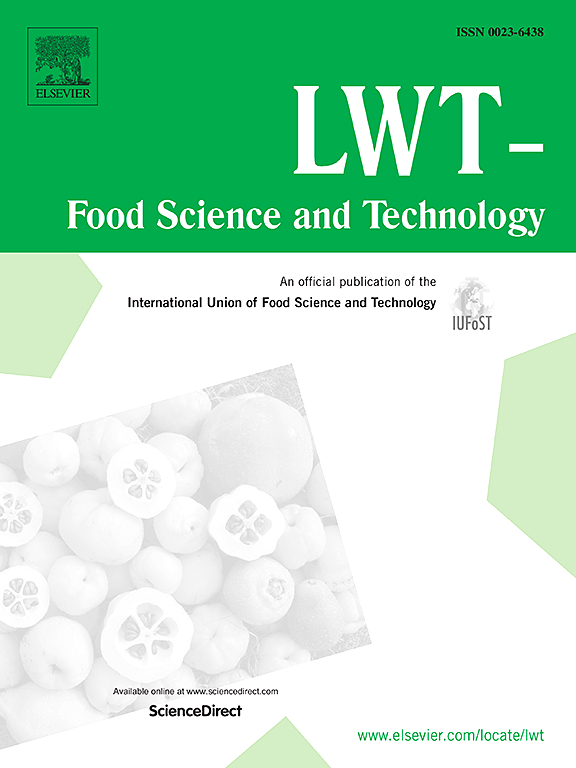Free radical scavenging kinetics of Maillard reaction products: A glucose-glycine model system
IF 6
1区 农林科学
Q1 FOOD SCIENCE & TECHNOLOGY
引用次数: 0
Abstract
This study investigated the free radical scavenging kinetics of Maillard reaction products (MRPs) generated from a glucose-glycine model system under controlled conditions (90 °C, pH 6.8) using a stopped-flow DPPH assay. Kinetic analysis revealed a time-dependent increase in antioxidant activity, highlighting the dynamic formation of reactive antioxidants during the Maillard reaction. Advanced analytical techniques, including high-performance liquid chromatography coupled with coulometric array detection (HPLC-CAD) and high-resolution mass spectrometry (HPLC-HRMS), were used to tentatively identify two key antioxidant MRPs: methylpyridin-3-ol (MP), 3,5-dihydroxy-6-methyl-2,3-dihydro-4H-pyran-4-one (DDMP) and its furanone isomer. The electrochemical properties of these compounds were evaluated, revealing their electron-donating abilities. A kinetic model was developed to simulate and predict the formation of these antioxidants, providing insights into the relationship between antioxidant reactivity and reaction progress. These findings contribute to our understanding of the formation of antioxidants during the Maillard reaction and offer a foundation for the development of natural antioxidants, which is aligned with the growing demand for clean-label food products.
求助全文
约1分钟内获得全文
求助全文
来源期刊

LWT - Food Science and Technology
工程技术-食品科技
CiteScore
11.80
自引率
6.70%
发文量
1724
审稿时长
65 days
期刊介绍:
LWT - Food Science and Technology is an international journal that publishes innovative papers in the fields of food chemistry, biochemistry, microbiology, technology and nutrition. The work described should be innovative either in the approach or in the methods used. The significance of the results either for the science community or for the food industry must also be specified. Contributions written in English are welcomed in the form of review articles, short reviews, research papers, and research notes. Papers featuring animal trials and cell cultures are outside the scope of the journal and will not be considered for publication.
 求助内容:
求助内容: 应助结果提醒方式:
应助结果提醒方式:


